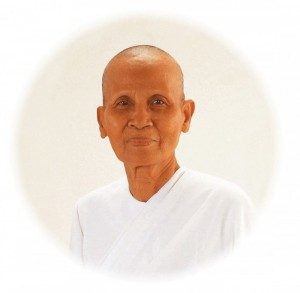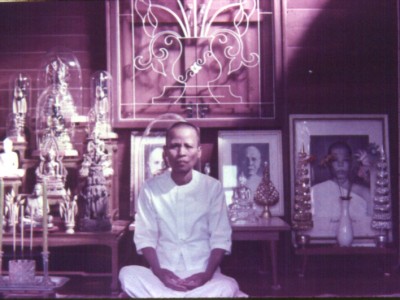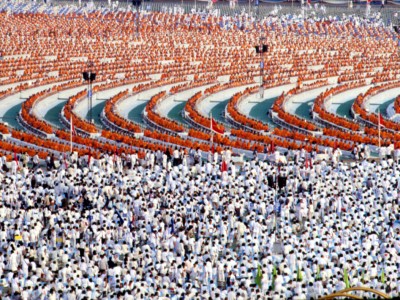The Founder of Dhammakaya Temple
"Second to None"
In 1927, Chand heard that a meditation master in Thonburi was able to use meditation to communicate with beings in the afterlife. This was the Great Master Phramongkolthepmuni, also known as Luangpu Sodh Candasaro. To accomplish her wish to reconcile with her father, Chand left her family eight years later and travelled to Bangkok to find her way to Wat Paknam Bhasicharoen, where Luangpu Sodh was located at that time. At first, Chand lived with her aunt in Bangkok. Later on, to acquaint herself with Wat Paknam, Chand decided to work as a servant. She applied to work in a household which was regularly visited by a teacher from Wat Paknam. This was the household of Madam Liap Sikanchananand in Saphan Han, Bangkok, in which the master Tongsuk Samdaengpan came regularly to teach. After a while, the master Tongsuk started to teach Chand in private and Chand quickly made progress in Dhammakaya meditation. With her determinate heart, she practiced and meditated diligently to apply Vijja Dhammakaya to seek for her dead father. She willed to practice and then was very successful so that the Great Master Phramongkolthepmuni, the discoverer of Vijja Dhammakaya, praised her that “Second to None”.

After Luangpu Sodh died in 1959, Khun Yai Chand transmitted the Dhammakaya tradition to a new generation at Wat Paknam Bhasicharoen. The house in which Khun Yai lived quickly became too small to accommodate all her students, and funds were raised to build a new house, called the “Dhammaprasit House”. Khun Yai encouraged meditation practitioners who were still students to ordain after graduation. One of the first of these was Luang Por Dhammajayo, who ordained in 1969. The number of students increased quickly, and in 1975 exceeded the capacity of Wat Paknam. Continuing there became inappropriate. Plans were made for establishing a new meditation center. A 78.4 acres plot of paddy-field was donated for building the center by Lady Prayad Prattayaponsa-Visudhathipbodi, an aristocratic lady. Having only 3,200 Baht (US$160 in 1970) to their name, a group of meditation practitioners headed by Khun Yai began establishing the temple. On the new land a meditation center was gradually built. It was first officially established on Magha Puja Day, February 20, 1970 and called “Buddhajak Meditation Center”. Luang Por Dhammajayo and Khun Yai Chand took responsibility for the finances of the establishment, and a lay-supporter, who later ordained as Luang Por Dattajeevo, took responsibility for building on the site. Every canal in the temple compound was dredged and excavated by the volunteers and the trees in the temple were planted by hand. In the beginning, the soil was very acidic. While working to plant the trees, Khun Yai became seriously under-nourished and at one time came dangerously close to death. She recovered under medical attention. In 1978, the meditation center became an official temple, and eventually was named “Wat Phra Dhammakaya”. Despite the initial difficulties, in the 1980s and 1990s the temple grew to be the largest in Thailand.
In her old age Khun Yai Chand was still active in the temple, though she had to be hospitalized from 1996 to 1997. She died peacefully on September 10, 2000 at Kasemrat Hospital, Bangkok, at the age of ninety-one. Her cremation was postponed for over a year in order to give time to everyone to pay their respects to her and make merit on her behalf. When her funeral was held, on February 3, 2002 it was claimed that over 250,000 monks from thirty thousand temples throughout Thailand attended to show their final respects, which is unusual, even more so for a female renunciant in Thailand. The heads of the monastic communities of several countries came to join. Khun Yai Chand’s remains were burnt in a grand ceremony, using glass to ignite the fire by sun light. Her ashes were kept in a small stupa.
In 2003, Wat Phra Dhammakaya built a monument in honor of Khun Yai Chand, called the “Mahavihara Khun Yai Ajan Mahā-ratana Upāsika Chand Khonnokyoong”. This is a hexagonal building with a meditation hall and a life-size golden image of Khun Yai Chand in it.



